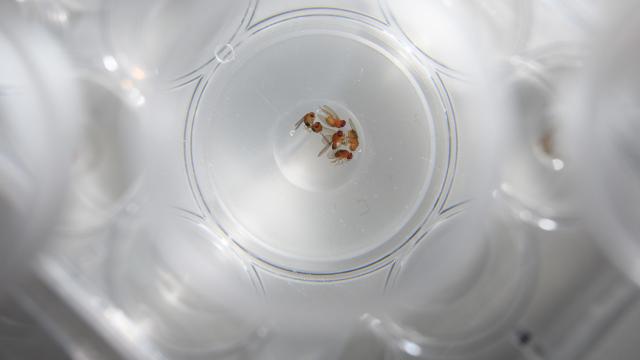Barely missing a fatal slap at a bothersome fly might be a headache for both of you, according to new research from scientists at the University of Sydney. They say they’ve found evidence that insects are capable of feeling chronic pain after an injury, much like we do. What’s more, studying why and how insects experience these sensations could help us better understand and treat chronic pain in humans.
Spotting pain in animals like mice or our precious pets isn’t too difficult. If your dog is whimpering or limping when he walks, it’s easy enough to guess that he might have a sore paw. But you can’t exactly read an insect’s face, nor do they really “think” in the same way that we or other mammals do.
We do know that insects experience something called nociception, which is simply defined as being able to detect and respond to an external stimuli that could be damaging to the body, like a person’s hand jumping back when it touches a hot stove. And insects carry receptors along the nervous system that should make them feel something very much like our sensations of acute pain when they encounter these stimuli. They also produce chemicals that, in our bodies at least, act as natural pain-killers.
The evidence is pretty strong then that insects can feel something akin to immediate pain. But according to the authors behind this latest study, published in Science Advances, there’s been much less work looking at their capacity for chronic pain.
For their gruesome experiment, they first amputated one of the fruit flies’ legs, causing neuropathic, or nerve, pain. In people, nerve pain is often chronic and difficult to treat. Then they let them heal back up. When they tested how the flies responded to stimuli, in this case a hot room, the flies were now much more sensitised. More plainly, they tried to escape the room more often at a lower temperature than they had before they lost their leg.
“After the animal is hurt once badly, they are hypersensitive and try to protect themselves for the rest of their lives,” said senior author Greg Neely, a pain researcher at the University of Sydney, in a release from the university. “That’s kind of cool and intuitive.”
Neely and his team then studied the cellular basis of this pattern in flies. In the fly nervous system, they found evidence of something called central pain sensitisation. When this happens in people, it can cause normally non-painful, often repetitive stimuli to become painful. And something similar seems to happen to these flies.
“The fly is receiving ‘pain’ messages from its body that then go through sensory neurons to the ventral nerve cord, the fly’s version of our spinal cord. In this nerve cord are inhibitory neurons that act like a ‘gate’ to allow or block pain perception based on the context,” Neely explained.
“After the injury, the injured nerve dumps all its cargo in the nerve cord and kills all the brakes, forever. Then the rest of the animal doesn’t have brakes on its ‘pain’. The ‘pain’ threshold changes and now they are hypervigilant.”
Because this pain system is so evolutionarily ancient, Neely said, that could hopefully mean we can use insects as a model in the lab to study and ultimately treat the root causes of at least some forms of chronic pain in people.
“Importantly now [that] we know the critical step causing neuropathic ‘pain’ in flies, mice and probably humans, is the loss of the pain brakes in the central nervous system, we are focused on making new stem cell therapies or drugs that target the underlying cause and stop pain for good,” said Neely.
Fruit flies aren’t the only critters scientists are studying to get a better grasp on human pain. Certain species of mole-rat are seemingly impervious to painful burning sensations caused by substances like capsaicin (the chemical that makes chilli spicy) and hydrochloric acid, and researchers hope that we can someday develop drugs that can help us mimic their pain-resisting strategies.
